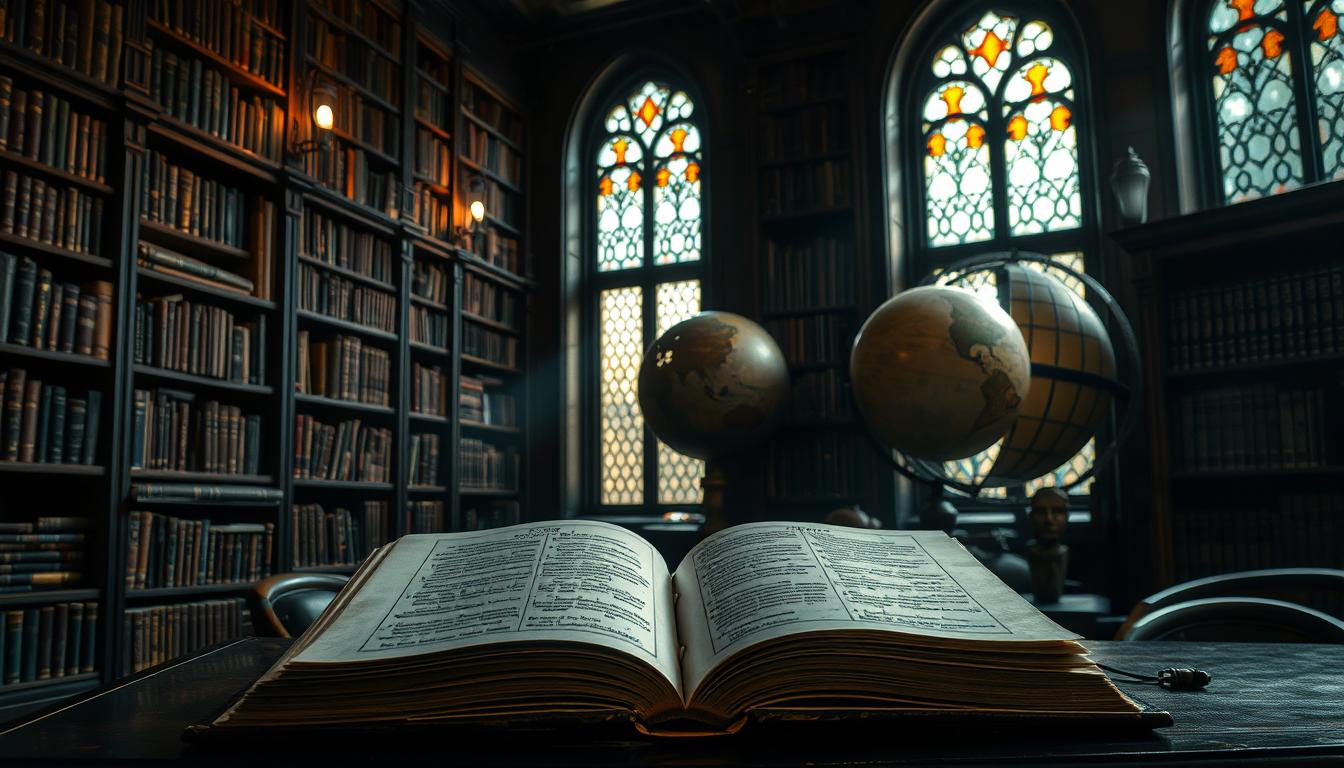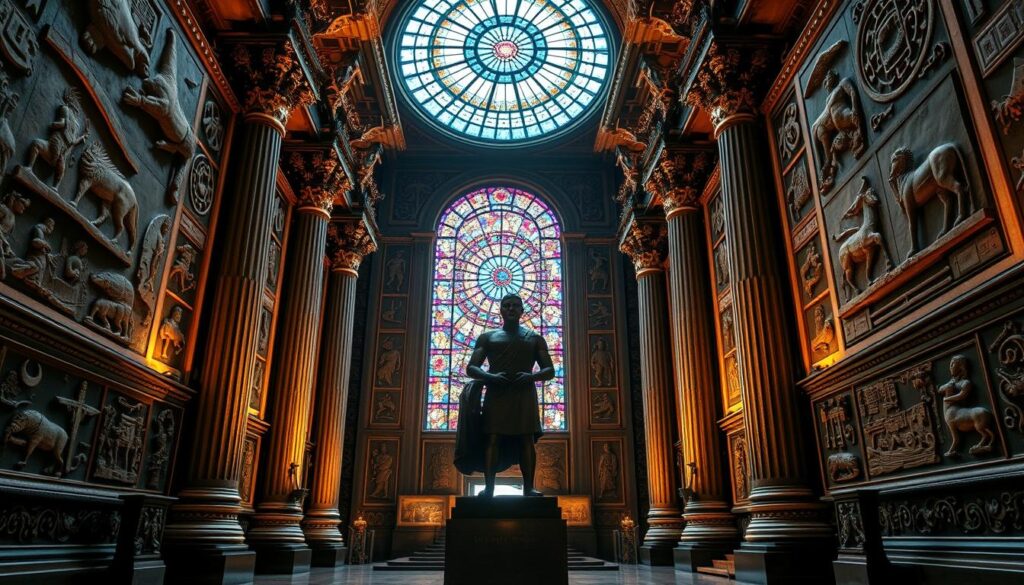Physical Address
304 North Cardinal St.
Dorchester Center, MA 02124
Physical Address
304 North Cardinal St.
Dorchester Center, MA 02124

Every great story holds hidden layers beneath its surface. Through carefully chosen symbols, writers turn ordinary details into emotional anchors that linger in our thoughts long after we close a book. Think of how a wilting flower might whisper about lost love, or how stormy skies could mirror a character’s inner turmoil.
This universal language isn’t limited to novels and poetry. We encounter symbols daily – a red traffic light commands attention, autumn leaves signal change, and even emojis convey complex feelings through simple images. These patterns form a secret code we instinctively understand.
Literary masters use this technique to create multi-layered narratives. A flickering candle might represent hope against darkness, while a recurring animal could embody a character’s hidden desires. These choices transform simple elements into powerful storytelling tools that engage readers on intellectual and emotional levels.
Great stories breathe through layers of hidden significance. Authors craft worlds where everyday elements become messengers of deeper truths, transforming simple narratives into treasure hunts for meaning.
This literary technique turns ravens into omens and roses into declarations of love. Through symbols, writers bridge the gap between tangible objects and abstract concepts like freedom, mortality, or desire. A locked door might represent secrets, while a storm could mirror emotional chaos.
Consider how colors function in stories. Red rarely stays just a color – it becomes passion, danger, or revolution. These patterns create a shared language between authors and audiences, letting them explore complex ideas without direct explanation.
Effective symbols act as silent characters in a narrative. They evolve with the plot, gaining new layers of significance. A child’s toy might symbolize innocence early in a story, then transform into a reminder of lost youth as the character matures.
| Symbol | Common Meaning | Famous Example |
|---|---|---|
| White Whale | Obsession | Moby Dick |
| Green Light | Unattainable Dreams | The Great Gatsby |
| Mockingbird | Innocence | To Kill a Mockingbird |
Writers often plant symbols early, letting them gain power through repetition. A broken clock in chapter one might seem decorative, but by chapter twenty, it could symbolize a character’s fractured relationship with time.
From ancient cave paintings to modern novels, symbols have shaped how we communicate ideas. These silent storytellers turn ordinary things into bridges between visible worlds and hidden truths. A cracked mirror might reflect inner conflict, while a winding road could represent life’s unpredictable journey.

Early humans carved spirals into stone to represent eternity. Egyptian hieroglyphs used owls for wisdom and scarabs for rebirth. This visual language evolved through religious texts and folk tales, preserving cultural values long before written words dominated storytelling.
Medieval tapestries hid political messages in floral patterns. Romantic poets made wilting flowers speak of mortality. Today’s authors still use this timeless technique to explore complex themes subtly. Symbols adapt across eras while keeping their emotional resonance.
| Time Period | Symbol | Cultural Meaning |
|---|---|---|
| Ancient Greece | Olive Branch | Peace & Victory |
| Victorian Era | Locked Diary | Secret Desires |
| Modern Day | Smartphone | Social Connection |
Unlike metaphors that directly compare ideas, symbols work through association. A storm in a novel isn’t just weather—it becomes turmoil through repeated use. Writers layer meanings like Russian nesting dolls, letting readers uncover deeper significance with each encounter.
This literary device’s power lies in its flexibility. While a rose traditionally meant love, modern stories might make its thorns symbolize painful growth. Symbols evolve, but their ability to convey universal human experiences remains constant across centuries.
Sharp readers know stories whisper secrets through carefully chosen details. Like detectives following clues, we can train ourselves to notice patterns that reveal hidden layers in a novel or poem. This skill transforms reading into an interactive treasure hunt where ordinary elements become keys to deeper meaning.

Authors often spotlight significant symbols through repetition. A pocket watch appearing in multiple chapters might represent time’s relentless march. Notice objects described with unusual detail – a cracked teacup receiving three sentences when other items get brief mentions likely holds symbolic weight.
Character transformations frequently mirror symbolic shifts. A protagonist who burns childhood toys during a pivotal scene might signal liberation from past traumas. These physical changes often reflect internal growth or moral dilemmas central to the story’s themes.
Contrasts in imagery often serve as symbolic signposts. A crumbling mansion beside a vibrant garden could symbolize tradition versus renewal. Pay attention to emotional anchors – objects characters touch frequently or discuss with intensity usually carry hidden significance.
Seasonal changes in literary works often mirror plot developments. Winter landscapes might foreshadow hardship, while spring blossoms could hint at new beginnings. These patterns create a visual language that enhances the reader’s connection to the narrative’s deeper concepts.
Cultural context matters too. While water often symbolizes purification across cultures, its specific meaning might shift depending on a story’s setting. A skilled writer layers universal and unique associations to craft symbols that resonate with diverse readers.
Masterful writers transform mundane details into emotional landmarks. These narrative anchors gain power through thoughtful placement, resonating long after readers finish the last page. The secret lies in balancing subtlety with intentional design—symbols should feel discovered, not planted like flags.
Begin with objects tied to your story’s core themes. A family heirloom might represent legacy early on, then shift to symbolize burdens as relationships fracture. Recurring elements need logical progression—a wilted flower in spring carries different weight than one in autumn.
Layer meanings like whispers rather than shouts. A recurring train whistle could first signal adventure, later evoke confinement as characters feel trapped by choices. This evolution mirrors real-life associations, where symbols gather new significance through repeated exposure.
Test your symbolic threads by asking: Do they enhance without overpowering? Could readers interpret them multiple ways? Effective emblematic elements work like puzzle pieces—satisfying when connected, but intriguing even alone.